Successful Farm Startup for Beginners: Virginia Beginning Farmer and Rancher Coalition Program
ID
AEE-67P
Introduction
Starting a farm is an exciting yet challenging opportunity. As with any new undertaking, there is a lot to think about before beginning a farm venture. Gaining access to farmland, viable markets, capital and credit, as well as hands-on training and resources are some of the most important startup issues to consider as part of the planning process.
You are likely asking yourself, “Where do I begin?” The purpose of this resource is to help newcomers make informed decisions at the start of the planning process. This “quick guide” is primarily designed for beginning farmers and ranchers, but service providers will also find this resource useful for answering questions about the farm startup process. This foundational work offers a valuable starting point on which to create a successful whole farm plan for a new agricultural venture.
What Is a Beginning Farmer or Rancher?
A renewed interest in beginning farmer and rancher programs has emerged in recent years. A growing number of agencies, extension systems, universities, and nongovernmental organizations are currently working in unique ways to improve the viability of new farms and the economic, social, and environmental fabric in which they belong (Niewolny and Lillard 2010). These newer initiatives — many of them collaborative efforts — are largely in response to a steady decline in the number of individuals entering agriculture careers, coupled with an increase in the number of exiting farmers and ranchers. These programs generally aim to address the specific startup needs of the next generation: to gain access to suitable farmland, markets, capital, and hands-on training (Ahearn and Newton 2009; Nickerson and Hand 2009).
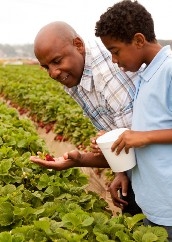
Beginning farmer definitions vary regionally, as they do nationally. The U.S. Department of Agriculture (USDA) states that “beginning farmers and ranchers are identified as those who have operated a farm or ranch for 10 years or less, either as a sole operator or with others who have operated a farm or ranch for 10 years or less” (Ahearn and Newton 2009, 1).
Virginia Cooperative Extension and other organizations serving the agricultural community recognize a diversity of farming experiences, backgrounds, and aims held by beginning farmers and ranchers. Many groups find it useful to consider the stages of commitment, decision-making, and skills that farmers move through as they start a career in farming or ranching. Drawing on the work of Sheils (2004), the following categories are a helpful guide to understanding this startup pathway.
Prospective or explorer farmers – Individuals interested in starting a farm or ranch. This includes next-generation farm family members as well as those who do not come from a farming background.
Startup farmers – Individuals who are in the early stages of their agricultural operation, often within the first one to three years of farming or ranching.
Re-strategizing farmers – Farmers who are making changes to their operation after farming for approximately four to seven years. These individuals usually have increased decision-making responsibility and commitment to farming.
Establishing farmers – Farmers who are expanding, diversifying, and stabilizing within years eight to 10 of the beginning farmer period.
Transitioning farmers – Individuals who are family farm members who have decision-making roles on the farm without having primary farm operator status.
What Steps Do You Need to Take?
Depending on where you are on the pathway to beginning farmer success, your ideas will be more or less developed. It is important to consider farming plans as early as possible. This planning tool is useful for the farmer or rancher, as well as the service provider when working with a newcomer to develop startup plans.
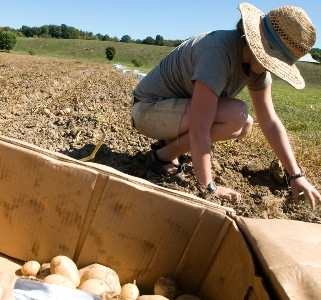
The following sections will walk you through a quick, step-by-step process where questions will be posed related to the five key areas of farm planning. These questions are designed to encourage reflection, goal setting, and a platform to organize a new farming enterprise. Use these questions as the basis for making informed decisions about beginning a new farming enterprise.
Step 1. What Are Your Vision and Goals for This New Venture?
Before you jump in with both feet, it is important to assess the feasibility of starting a farm. There are many ways you can describe your farm and farming enterprise. There are also many reasons why someone would want to become a farmer or rancher. Your reasons are important and should be thoroughly explored.
Questions you should first consider answering include:
- What kind of agricultural enterprise do you envision having?
- Where is it located?
- Who is involved?
- What makes your farm distinctive from other agricultural operations in the area?
- What are your goals — both personal and professional?
- Are there any health-related issues that may impact running the farm that need to be addressed and planned for before moving forward?
- Farming is very diverse in terms of scale and scope. Most beginners are small-scale farmers or ranchers whose operations are moderate in acreage and gross profit (Nickerson and Hand 2009). All beginning farmers, however, have to consider the many roles that are involved in farm startup and operation: production manager, land steward, marketer, sales associate, business manager, financial planner, equipment technician, and employer (Hayes 2004). Therefore, the reality of owning and managing a new farm can be overwhelming.
- Questions to consider before moving on to the next step are:
- Will you farm with others or by yourself?
- Will you or members of your family also work off the farm?
- Do you require off-farm income?
- Is the land owned by you or by another party?
- Will you hire off-farm labor?
- Farming can be very time-intensive, and it can place heavy demands on the normal day-to-day dynamics of family living. As you consider your farming idea, it is important to evaluate farm goals within the larger context of your lifestyle and needs.
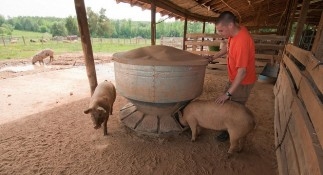
Step 2. Do You Have Access to Farmland and Infrastructure?
One of the most important startup issues to explore is access to farmland. Many issues surround farmland access and the transfer of a farm and/or a farm business to the next generation (Branan 2012). For many farmers, land ownership is a core value and goal. Others feel differently about property ownership and prefer not to own land at first or ever. Renting or leasing land is the best option for them.
Consider the following questions in relation to your immediate and long-term farming plans.
- Do you currently have access to good farmland? If so, do you own or lease?
- What alternatives to farmland ownership would you consider?
- If you own land as farm or forest, do you and your family wish to keep it?
- If transferring farmland is a goal, how will you be able to do so?
- What buildings — such as storage sheds, animal housing, barns, storage tanks, greenhouses — already exist, and what level of repair are they in?
Step 3. What Are Your Potential Market Channels and Sources?
Market-driven planning is very common in the agriculture industry. Taking time to fully explore your marketing options before any farm enterprise decisions are made is essential. All too often, products are grown or raised without a solid plan as to where they will be sold or whether the market is feasible for the farmer’s scale of production or business model. Other market-related considerations include food safety and liability insurance. These and other issues will impact your marketing plan.
There are two main categories of markets: direct and wholesale (Davis et al. 2005). Each type has its advantages and disadvantages. Many small-scale and beginning farm operations use a combination of these two markets (Nickerson and Hand 2009).
In choosing your market channels, you need to consider the location of the farm, the distance to your markets, the actual marketability of your product, associated marketing costs, legal issues, and your personal/family characteristics and values.
Key questions to explore include:
- How accessible are the farm and related production areas to roads and processing facilities?
- How unique is your proposed product?
- What are all possible venues to market your product(s) with the resources you have?
- Are you interested in direct markets? These would include but are not limited to such market options as farmers markets, Community Supported Agriculture (CSA), roadside stands, U-pick, direct sales to restaurants, etc. Keep in mind that these market options require working directly with customers. Do you like working with people?
- Are you interested in wholesale markets? These markets include auctions, cooperatives, institutional sales, etc. Wholesale markets often require higher volumes of product than direct markets. This suggests that you need to understand the scale of production as you decide which markets to use.
- Not only do you need to explore wholesale and direct marketing opportunities, you need to identify and profile potential customers, research market trends, evaluate competition, and, hopefully, identify a few opportunities not previously recognized.
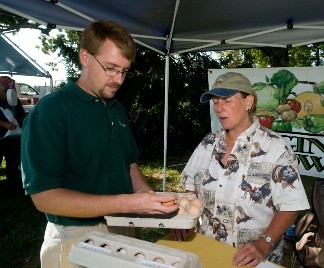
Step 4. Do You Have Enough Capital to Start Your Farm?
It will serve you well to walk into your planning process with your financial eyes wide open. To make the business work, you need to estimate a farm budget for the specific enterprise as well as build a budget of all input costs and expected income. This is an important step toward creation of a successful farm plan.
Focusing on your access to capital, answer the following questions so you can begin focusing on developing “real” numbers to incorporate into a farm budget or financial plan:
- What basic startup costs are needed to establish your farm enterprise?
- Do you need to purchase or rent land?
- What costs are associated with liability and other insurance?
- If you hire off-farm labor to help with the farm, what costs might be involved with insurance and workman’s compensation?
- Apart from your own available capital, how much more capital do you need?
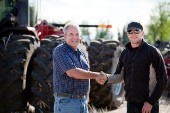
It is crucial to remember that your farm or ranch is an actual business. Most beginners are developing a small business venture. There are many financial resources and tools available to you that will strengthen your plans to ensure financial sustainability.
Step 5. What Can the Land Produce?
Many beginning farmers and ranchers focus first on the production aspects of farming or ranching. This is to be expected because it might be the primary reason you are interested in becoming a farmer or rancher. However, good planning does not begin with the production process itself.
A critical part of farm planning is having a full understanding of the actual farm site. This will help you fully characterize the site in terms of resources, land history, and other environmental factors.
Planning questions you need to ask should include:
- What is your source of water irrigation? Is your irrigation source adequate?
- What is the annual average precipitation in inches?
- What kinds of crops were produced and animals raised?
- Are the soils productive for the crop you want to grow?
- Is there a history of pesticide use?
- What is the sun and shade exposure?
- What is the slope of your plots or fields?
Regardless of what product(s) you plan to grow or raise, a central question to consider is the type of production management system you will implement. It is important to assess if your production approach is a good fit with your farmland capabilities, financial needs, market outlets, and personal level of knowledge and skill. Virginia Cooperative Extension and partnering organizations are excellent resources for learning about production practices for a wide variety of horticultural and agronomic products, crops, small and large livestock, ornamental and landscaping products, and aquaculture.
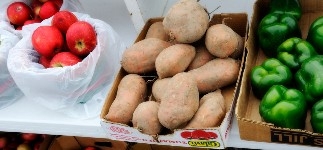
What Is the Next Step?
These questions are just some points to think over before making a commitment to move forward. A solid basis of information is essential to make informed decisions for farm startup. This foundational work can also be helpful as you begin talking with area resource providers, such as your county Extension agent who can assist you in taking the next step. For many, the next step includes developing a comprehensive whole farm plan as the framework for short- and long-term farming success.
Additional Information
For more information about starting a farm and whole farm planning trainings in Virginia, visit the Virginia Beginning Farmer and Rancher Coalition Program website at www.vabeginningfarmer.org.
Please contact Kim Niewolny at niewolny@vt.edu or 540-231-5784 for more information regarding this publication.
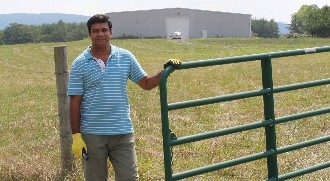
Selected Print Resources for Additional Information
Business Development
Building a Sustainable Business: A Guide to Developing a Business Plan for Farms and Rural Businesses, by G. DiGiacomo, R. King, and D. Nordquist, 2003. Minnesota Institute for Sustainable Agriculture handbook series, book 6. Sustainable Agriculture Research & Education.
www.sare.org/publications/business/business.pdf
Question and Answer Guide for Starting and Growing Your Small Business, by S. Ratliff, K. Barker, and S. Tate, 2009. Virginia Cooperative Extension publication 310-100.
www.pubs.ext.vt.edu/310/310-100/310-100_pdf.pdf
Farmland and Farmland Transitions
“FarmLASTS Project Online Manual” website, 2011. Farm Land Access, Succession, Tenure and Stewardship. The FarmLASTS Project is a national research, education, and extension project funded by the USDA National Research Initiative. www.uvm.edu/farmlasts
Planning the Future of Your Farm: A Workbook Supporting Farm Transfer Decisions, Virginia Edition, by A. Branan, 2012. Virginia Cooperative Extension publication 446-610.
www.pubs.ext.vt.edu/446/446-610/446-610_pdf.pdf
Marketing
Farmers Markets: Marketing and Business Guide, by J. Bachmann, 2008. ATTRA – National Sustainable Agriculture Information Service publication IP146. www.attra.ncat.org/index.php
Teaching Direct Marketing and Small Farm Viability: Resources for Instructors, A. Miles and M. Brown, eds., 2005. Center for Agroecology and Sustainable Food Systems, University of California-Santa Cruz.
http://casfs.ucsc.edu/education/instructional-resources/teaching-direct-marketing-and-small-farm-viability
Whole Farm Planning
Holistic Management: A Whole-Farm Decision Making Framework, by P. Sullivan, 2011. National Center for Appropriate Technology. www.attra.ncat.org/attra-pub/summaries/summary.php?pub=296
Whole Farm Planning: Combining Family, Profit, and Environment, by D. Mulla, L. Everett, and G. DiGiacomo, 1998. Minnesota Institute for Sustainable Agriculture.
www.cultivatingsuccess.org/instructors/SSFR%20Readings%202011/2.5_WFP_Family_Profit.pdf
Whole Farm Planning for Economic and Environmental Sustainability, by R. Janke, 2000. Kansas State University Research and Extension publication MF-2403.
www.ksre.ksu.edu/library/hort2/mf2403.pdf
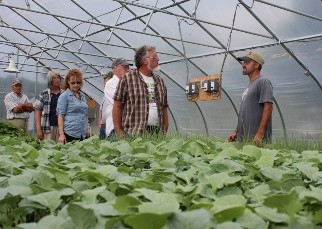
Selected Virginia-Specific Online Resources
Virginia Cooperative Extension – Provides access to publications, local Extension offices, educational resources, programs, and news. VCE offers educational resources for many farmers, including beginning farmers. The Virginia Whole Farm Planning Curriculum is one example of these resources. Visit the VCE website at www.ext.vt.edu/offices to locate your nearest Extension office for more information about programming and technical assistance. Local offices and research centers can also be located by visiting local websites. www.ext.vt.edu
Virginia Department of Agriculture and Consumer Services – Provides information on marketing services throughout Virginia. Information is available on any number of products; regulatory agencies; consumer organizations; and state, local, and federal governments. Under the marketing services link, information is available about many different publications and events in Virginia. www.vdacs.virginia.gov/
Virginia FAIRS: Virginia Foundation for Agriculture, Innovation and Rural Sustainability – Offers assistance in rural areas to promote cooperative and business development. www.vafairs.com/
Virginia Farm Service Agency (FSA) – Provides direct, guaranteed loans to beginning farmers and ranchers unable to obtain financing from commercial credit sources. FSA targets a portion of its direct, guaranteed farm ownership and operating loan funds to beginning farmers and ranchers.
www.fsa.usda.gov/FSA/stateoffapp?mystate=va&area=home&subject=landing&topic=landing
Web Soil Survey – Provides soil data and information produced by the National Cooperative Soil Survey. It is operated by the USDA Natural Resources Conservation Service. http://websoilsurvey.nrcs.usda.gov/app/HomePage.htm
Acknowledgements
The Virginia Beginning Farmer and Rancher Coalition Program is a collaborative effort represented by beginning farmer stakeholders across the Commonwealth of Virginia. It is housed in Virginia Tech’s Department of Agricultural and Extension Education and is a program of Virginia Cooperative Extension. The program is sponsored by the Beginning Farmer and Rancher Development Program of the USDA National Institute of Food and Agriculture, Award No. 2010-49400-21720.

The authors would like to express their appreciation for the review and comments made by Peter Callan, agriculture and natural resources agent, Virginia Cooperative Extension Culpeper County Office; Jim Schroering, agriculture and natural resources agent, Virginia Cooperative Extension Hanover County Office; Theresa Nartea, marketing and agribusiness specialist, Virginia State University; and Dave Lamie, associate professor and extension specialist, Clemson University.
References
Ahearn, M., and D. Newton. 2009. Beginning Farmers and Ranchers. U.S. Department of Agriculture. Economic Research Service. Economic Information Bulletin No. 53. Washington: USDA. www.ers.usda.gov/media/156049/eib53_1_.pdf.
Branan, A. 2012. Planning the Future of Your Farm: A Workbook Supporting Farm Transfer Decisions. Virginia Edition. Virginia Cooperative Extension. Publication 446-610. www.pubs.ext.vt.edu/446/446-610/446-610_pdf.pdf.
Davis, P., D. O’Brien, J. Perez, K. Reynolds, S. Schwartz, N. Vail, and R. Voiland. 2005. Teaching Direct Marketing and Small Farm Viability: Resources for Instructors. Edited by A. Miles and M. Brown. Center for Agroecology and Sustainable Food Systems. University of California-Santa Cruz. Santa Cruz, Ca.: Center for Agroecology and Sustainable Food Systems.
http://casfs.ucsc.edu/education/instructional-resources/teaching-direct-marketing-and-small-farm-viability.
Hayes, K. 2004. Exploring the Small Farm Dream: Is Starting an Agricultural Business Right for You? New England Small Farm Institute. Workbook. Belchertown, Mass.: New England Small Farm Institute.
www.smallfarm.org/main/for_new_farmers/exploring_the_small_farm_dream/workbook.
Nickerson, C., and M. Hand. 2009. Participation in Conservation Programs by Targeted Farmers: Beginning, Limited-Resource, and Socially Disadvantaged Operators’ Enrollment Trends. U.S. Department of Agriculture. Economic Research Service. Economic Information Bulletin No. 62. Washington: USDA. www.ers.usda.gov/media/150252/eib62.pdf.
Niewolny, K. L., and P. T. Lillard. 2010. “Expanding the Boundaries of Beginning Farmer Training and Program Development: A Review of Contemporary Initiatives to Cultivate a New Generation of American Farmers.” Journal of Agriculture, Food Systems, and Community Development 1 (1): 65-88.
www.agdevjournal.com/attachments/106_JAFSCD_Expanding_Boundaries_of_Beginning_Farmer_Programs_08-10.pdf.
Sheils, C. 2004. “What Does the Term ‘New Farmer’ Mean?” In Working With New Farmers: Topics in Professional Development, by C. Sheils and M. Descartes, 4-7. New England Small Farm Institute. Special Project: A Growing New Farmers Publication. Professional Development Series No. 101. Belchertown, Mass.: New England Small Farm Institute.
www.smallfarm.org/uploads/uploads/Files/WORKING_WITH_NEW_FARMERS.pdf.
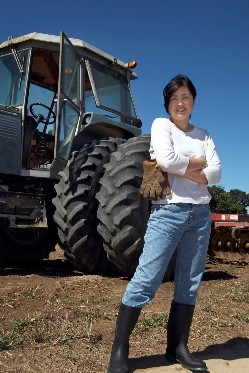
Virginia Cooperative Extension materials are available for public use, reprint, or citation without further permission, provided the use includes credit to the author and to Virginia Cooperative Extension, Virginia Tech, and Virginia State University.
Virginia Cooperative Extension is a partnership of Virginia Tech, Virginia State University, the U.S. Department of Agriculture, and local governments. Its programs and employment are open to all, regardless of age, color, disability, sex (including pregnancy), gender, gender identity, gender expression, national origin, political affiliation, race, religion, sexual orientation, genetic information, military status, or any other basis protected by law
Publication Date
May 12, 2020



